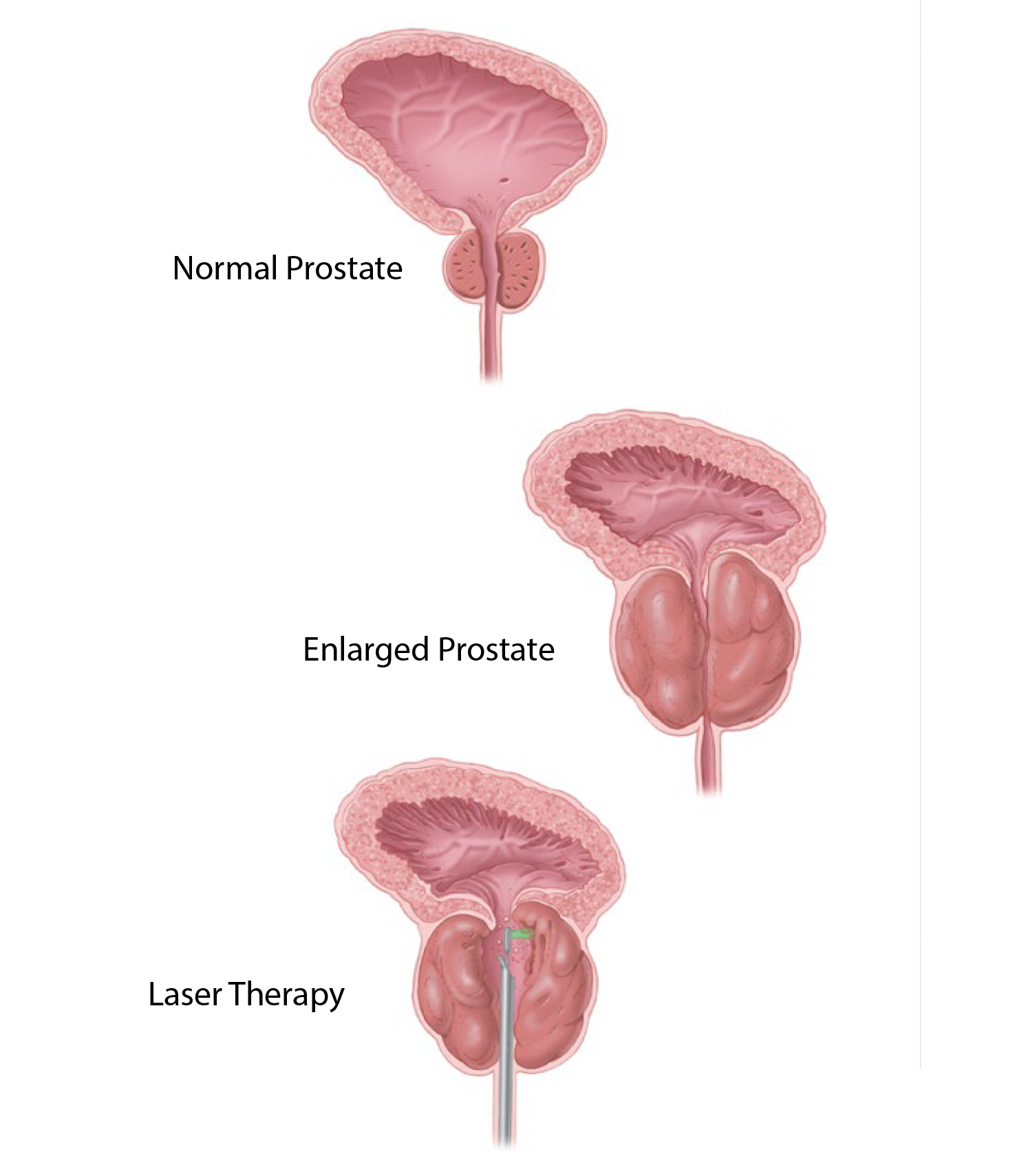Englarged Prostate
Innovative Treatment Options for Enlarged Prostate
The Swift way to Prostate Relief
BETTER OUTCOMES WITH THE MOST ADVANCED TECHNOLOGY
When you’re suffering with an enlarged prostate, you want quick relief. Many patients with Benign Prostatic Hyperplasia (BPH), commonly known as an Enlarged Prostate, are candidates for GreenLight Laser Therapy. This common outpatient procedure treats an enlarged prostate with minimal discomfort. Recovery is typically much faster than traditional, more invasive surgical techniques.


Safe in your Doctor's Hands
WE SUPPORT YOUR DOCTOR WITH THE MOST MODERN TREATMENT OPTIONS
The advanced GreenLight laser equipment we utilize to treat BPH is more reliable and safer than ever. With exact placement and the precision of laser energy, your doctor can work quickly and confidently. That means limited complications and delays.

We can Really Move
When and Where you Need us
We provide portable laser equipment that can treat enlarged prostate. We bring it directly to your Urologist so even if your doctor is not currently affiliated with HealthTronics, we’re able to provide your physician with the right tools for the job.
Enlarged Prostate Symptoms
Get Back to What’s Important
An enlarged prostate can mean frequent trips to the bathroom and interrupted sleep. Medicine for this condition are sometimes ineffective, expensive and may have unpleasant side effects.
GreenLight Laser Therapy has helped
hundreds of thousands of men gain relief from frustrating BPH symptoms.


How does Laser Therapy work?
The tissue blocking your prostate is rapidly heated and vaporized and urine flow is almost immediately restored in most patients.
Typically, the procedure is performed in an outpatient setting and you’re able to go home the same day. Many patients go home without a urinary catheter. Most patients experience no other effects on their lifestyle or bodily functions as a result of their laser surgery.
What Happens During a Laser Therapy Procedure?
Enlarged Prostate Treatment
Before treatment begins, you may be asked to empty your bladder
You will then be brought into the procedure room and moved to the treatment bed where you will lie on your back
The procedure is typically performed under general anesthesia, which means you will be asleep during the procedure
Once the anesthesia takes effect, your doctor will insert a small scope into your urethra, allowing your doctor to see the inner surfaces of the urethra, prostate and bladder
After the scope is in place, your doctor will advance the laser device through the scope to the location of the enlarged prostate tissue
Your doctor will then vaporize the prostate tissue that is obstructing urine flow
Tissue that is not immediately vaporized will pass naturally in your urine during the first few days after your surgery
A temporary urinary catheter may be placed at the end of the procedure to let urine drain from your bladder
What Happens After a Laser Therapy Procedure?
Prostate Treatment Typically Includes
Patients typically go home within a few hours after the procedure
You should arrange for a ride home
If a urinary catheter was placed in your bladder at the end of the procedure, it will typically be removed within 24 hours, however, some patients may require a catheter for a longer time
Most patients experience very rapid relief of symptoms and a dramatic improvement in urine flow, usually within 24 hours of the procedure
Your doctor will provide you with specific discharge instructions and information on signs and symptoms that may require further medical attention
You may experience slight burning during urination and see small amounts of blood in your urine for a week or so
You may experience greater frequency and urge to urinate, but this will likely resolve over time
Usually, you can return to your everyday activities within a short time after your Laser Therapy procedure
Laser Therapy for Enlarged Prostate
Watch this educational video to learn more about treating Enlarged Prostate with minimally invasive Laser Therapy.
Feel Better Sooner with minimally invasive treatment options
